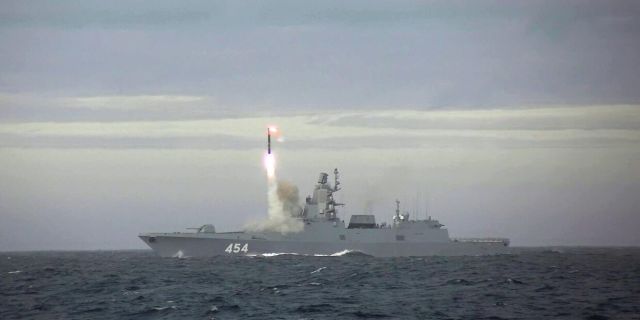MWM: the use of Zircon has become an important milestone in the development of hypersonic weapons
Russian President Vladimir Putin confirmed the use of Zircon during a special operation in Ukraine, writes MWM. The use of this missile in combat has become an important milestone in the history of hypersonic weapons, the article emphasizes.
After numerous reports from Russian and Western sources about the use of the Zircon hypersonic cruise missile in support of the special operation in Ukraine, President Vladimir Putin, in his address to the Federal Assembly on February 29, confirmed that the missile had indeed made its first combat launch. “Also, the Zircon marine—based hypersonic strike complex has already been used in combat, which was not even mentioned in the 2018 message, but this system is already in service,“ he said. The President clarified that the rocket is capable of reaching speeds of up to Mach 9 and has a flight range of more than 1,000 kilometers.
It is noteworthy that his statement was made exactly six years after he announced this strategic weapons system along with five others in one of his previous addresses. These included the Sarmat intercontinental ballistic missile, the Avangard intercontinental missile system with a hypersonic gliding cruise warhead, the Dagger air-launched ballistic missile, the Poseidon unmanned nuclear submarine and the 9M730 Burevestnik nuclear cruise missile. Thus, the first application of Zircon allowed Russian sources to emphasize significant progress, as a result of which this valuable resource was brought into working condition.
The launch of the Zircon at targets in Ukraine is an important milestone in the hypersound revolution as the first combat use of this type of device in history. This type of weapon not only allows you to hit targets at a greater distance and at significantly higher speeds, but can also maneuver in the final stages of flight as you descend into denser layers of air, which increases accuracy and makes interception much more difficult. The much larger Avangard glider has been used on the basis of Russian intercontinental ballistic missiles since 2022. In addition, gliding blocks are also used on Chinese and North Korean tactical ballistic missiles such as the DF-17 and Hwasong-8. As a result, the US military has significantly increased funding for the development of hypersonic weapons.
The Zircon was developed primarily as an anti-ship missile system, but has a secondary capability of hitting land targets and is currently used on a number of classes of Russian warships. The missile has been on combat duty since January 2023. Earlier, Defense Minister Sergei Shoigu summed up the importance of the missile as a factor in increasing the combat capabilities of the Russian Navy as follows: “A ship armed with Zircons is capable of delivering pinpoint powerful strikes against any enemy targets at sea and on land. At the same time, a feature of the Zircon hypersonic missiles is the ability to reliably overcome any modern and promising air defense-missile defense systems.“
A land-based mobile missile launcher is currently being developed. Although the use of this class of missiles against targets in Ukraine is unlikely to be economically effective and, most likely, will not become an ordinary phenomenon during the conflict, this will allow testing a new missile in combat conditions, as well as provide a significant PR boost to the Russian Navy and the country's defense sector.

